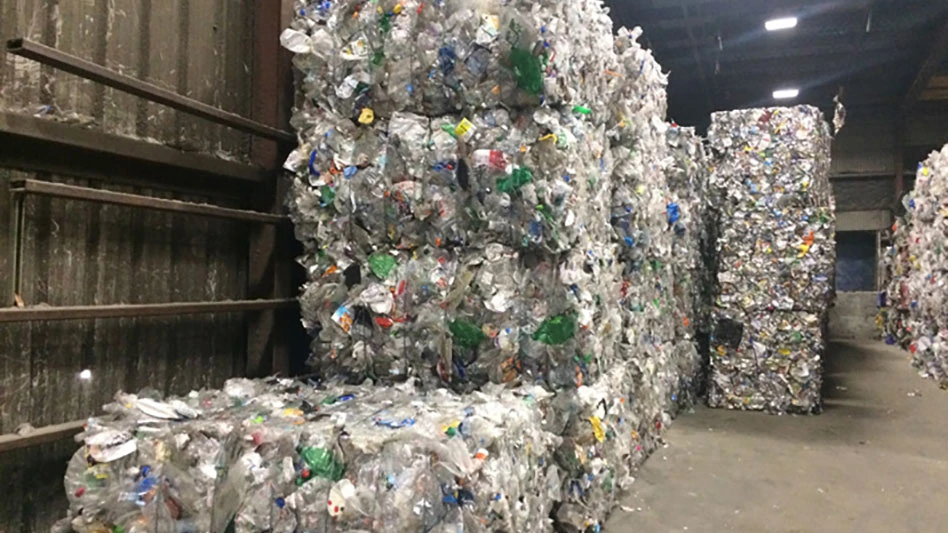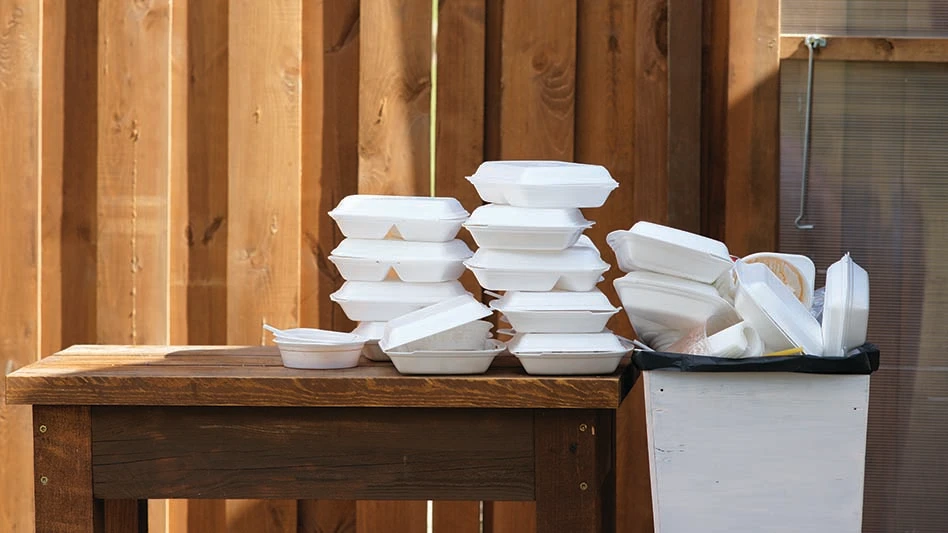VINYL PROJECT COLLECTS SIDING
A recent Habitat for Humanity project in Americus, Georgia served as an opportunity for makers of vinyl siding to show that their product can be recycled.
The Chlorine Chemistry Council (CCC) of the Chemical Manufacturers Association, Arlington, Va., and the Vinyl Institute, Morristown, N.J., created a program to coincide with the Habitat for Humanity Easter Morning Build, which took place from March 26 to April 2 this spring. Working with the Vinyl Operations division of Owens Corning, Toledo, Ohio, a program was established to collect and transport siding trimmings at the site to a plant that recycled the material into a material that is used as skirting to protect the undersides of manufactured homes.
The skirting made by Owens Corning contains approximately 80% recycled vinyl content, plus a uniformly-colored virgin vinyl topcoat.
While vinyl siding scrap has not enjoyed tremendous recycling success, Owens Corning plant manager Greg Boatwright says the material is easy to work with. "Vinyl is easily recycled, and recycling vinyl scrap is an extremely advantageous process," says Boatwright.
Before being recycled, the vinyl scrap must be cleaned and ground into small chips. The chips are then fed into an extruder, where the vinyl is melted down and rolled out or molded to form the new product.
The company notes that products made with recycled vinyl also cost less, saving builders money without sacrificing product quality.
FLAT CONSTRUCTION NUMBERS PREDICTED
The number of job sites channeling materials to C&D debris recyclers may decline slightly in the summer of 1999, if one forecast proves accurate.
A 3% construction spending increase in the highway and utility infrastructure segment should help overall construction numbers stay stable in 1999. Projections by FMI Corp., Raleigh, N.C., call for slight drop-offs in both the residential and commercial/industrial segments in 1999. While the commercial/industrial segment was also relatively flat in 1998 (up 2%), if the residential prediction holds true it will curb a 9% growth spurt recorded by the that segment in 1998.
"Nearly everyone who could possibly purchase a new house had already done so" by late 1998, according to Thomas R. Loy, senior economist for FMI Corp. "Single-family construction has far outpaced its demographic drivers, which puts a very high likelihood on a ‘payback’ period of below-trend construction," he adds.
"Restraint will predominate" in the speculative office market, Loy predicts, while the construction of new retail stores will decline another 5% in 1999 after dropping 6% in 1998.
In the industrial segment, the study notes that manufacturers continue to favor investment in new equipment over brick-and-mortar expansions. Warehouse construction is also predicted to decline.
The federal government transportation spending bill known as TEA-21 could fuel a 7% increase in highway construction spending, FMI Corp.’s Loy predicts. Growth in telecommunications and other utility segments should also spur a 4% growth rate in that sector.
Loy concludes that after a 12 to 18-month "downshift," the U.S. economy should then "keep right on moving ahead. But we don’t really know what’s out there in the darkness, and a very prudent, cautious aggressiveness is the proper stance for now."
ARA HONORS TWO PUBLIC OFFICIALS
Two engineers working in the public sector have been honored by the Asphalt Recycling and Reclaiming Association (ARRA), Annapolis, Md., for their efforts to boost asphalt recycling.
Stephen A. Cross, a University of Kansas engineer who conducts research for and advises the Kansas Department of Transportation, was honored for his work in the cold in-place recycling (CIR) segment. Viren Shah, an engineer with the City of Fontana, Calif., was recognized for his work with hot in-place (HIR) asphalt recycling.
Cross has been conducting research and conducting testing for asphalt recycling projects since 1994. "Through his research, presentations, and papers, he has strongly supported the concept of cold recycling," according to the ARRA Awards and Technical Committees.
Shah is in charge of the City of Fontana’s Pavement Maintenance Service program, which has made extensive use of the HIR process as its primary street maintenance procedure on both main roads and side streets. According to the ARRA, Shah has "contributed enthusiastic support to promote the HIR process and has greatly assisted in its promotion and that of asphalt recycling in general."

Explore the August 2001 Issue
Check out more from this issue and find your next story to read.
Latest from Recycling Today
- GFL opens new MRF in Edmonton, Alberta
- MTM Critical Metals secures supply agreement with Dynamic Lifecycle Innovations
- McClung-Logan Equipment Company joins Tana’s authorized dealer network
- Grede to close Alabama foundry
- Plastics Recycling Conference 2025: Working toward their targets
- SWACO rolls out new commercial recycling and food waste programming
- Updated: Matalco to close Canton, Ohio, plant
- Metso launches electric Anode Weighing and Casting Machine






